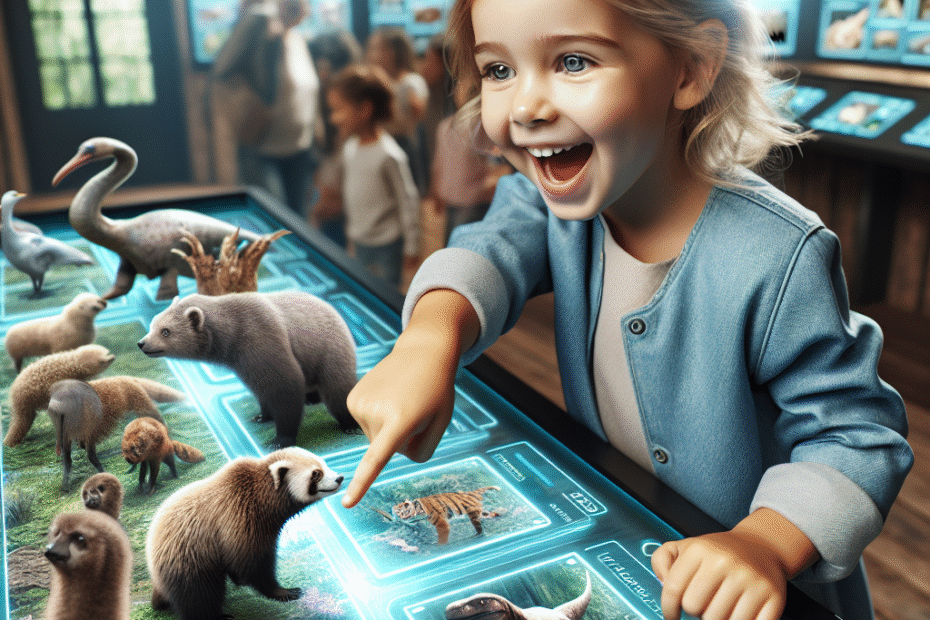“`html
Understanding Animal Adaptations for Kids
Animal adaptations for kids can be an exciting topic as they delve into the astonishing world of how creatures survive and thrive in often challenging environments. With a focus on scientific curiosity, educators and parents can utilize a plethora of resources to make learning about animal adaptations both engaging and informative.
Why Animal Adaptations Matter
Animal adaptations are special features or behaviors that enable animals to live successfully in their environments. These adaptations can be structural, like a giraffe’s long neck, or behavioral, like birds migrating to warmer areas during winter. Understanding these adaptations is essential for kids as it nurtures their love for nature and enhances critical thinking.
Interactive Websites
Digital resources play a crucial role in teaching animal adaptations for kids. Websites such as National Geographic Kids provide interactive content that includes videos, facts, and quizzes. They help illustrate the diverse adaptations animals have developed.
According to a Pew Research study, 60% of children between the ages of 8 and 12 spend time learning online each day. Engaging kids through multimedia-rich platforms enhances retention and sparks curiosity.
| Resource Type | Examples |
|---|---|
| Interactive Websites | National Geographic Kids, Discovery Kids |
| Books | “The Magic School Bus Explores the World of Animals” |
| Documentaries | BBC’s “Planet Earth” |
| Educational Games | Ecosystem Role-Play Games |
Books and Reading Materials
Books are timeless tools in teaching complex topics like animal adaptations for kids. Titles such as “The Magic School Bus Explores the World of Animals” can captivate young minds through storytelling and colorful illustrations. Libraries and online platforms furnish access to extensive reading materials suitable for various reading levels.
Educational Documentaries and Shows
Visual learning through documentaries can greatly enhance understanding. Series like BBC’s “Planet Earth” or Disney Nature’s “Bears” provide breathtaking visuals and narrations explaining how different species adapt to their habitats. This method excites kids and provides a broader perspective on global biodiversity.
Role-Playing and Simulation Games
Games that simulate ecosystems or animal survival scenarios can offer immersive experiences in the world of animal adaptations for kids. Ecosystem role-play games encourage children to think critically as they make decisions affecting food chains, predator-prey dynamics, and adaptation strategies.
A study by the Avera Health shows that children who engage in educational games exhibit higher problem-solving skills and decision-making abilities, reinforcing the practical utility of interactive learning environments.
Hands-On Science Projects
Science projects related to animal adaptations bring concepts to life, allowing kids to experiment and see the principles in action. Activities might include building an animal habitat model or simulating camouflage using arts and crafts. These projects not only educate but also inspire creativity and innovation.
Field Trips and Outdoor Learning
Incorporating nature walks and visits to zoos or wildlife sanctuaries can be incredibly valuable in teaching animal adaptations for kids. Observing animals in natural habitats cements classroom learning and nurtures a genuine appreciation for wildlife conservation.
Key Takeaways
- Animal adaptations are crucial for survival and can be both structural and behavioral.
- Interactive websites, books, documentaries, and educational games are effective tools for teaching kids about animal adaptations.
- Hands-on science projects and field trips can enhance understanding and retention of information about animal adaptation strategies.
- Resources should be diverse and cater to different learning preferences to be most effective.
Frequently Asked Questions
1. Why is it important for kids to learn about animal adaptations?
Learning about animal adaptations helps children understand biodiversity and how species survive environmental challenges, fostering a deeper appreciation for nature and enhancing critical thinking skills.
2. What are structural and behavioral adaptations?
Structural adaptations involve physical features of an animal, such as fins or feathers, which help it survive, while behavioral adaptations entail actions performed by the animal, like migration or hibernation.
3. Are there any online games that help teach animal adaptations?
Yes, there are several online platforms that offer educational games focused on ecosystems and survival strategies, which help kids learn about animal adaptations through interactive play.
4. How do documentaries enhance learning about animal adaptations?
Documentaries provide visual and auditory narratives that make complex concepts more accessible and engaging, helping children see real-life examples of animal adaptations and their impact on survival.
5. Can field trips really make a difference in understanding animal adaptations?
Absolutely. Field trips to zoos or natural parks allow children to witness animals in their environments, reinforcing classroom knowledge and emphasizing the importance of conservation efforts.
“`
